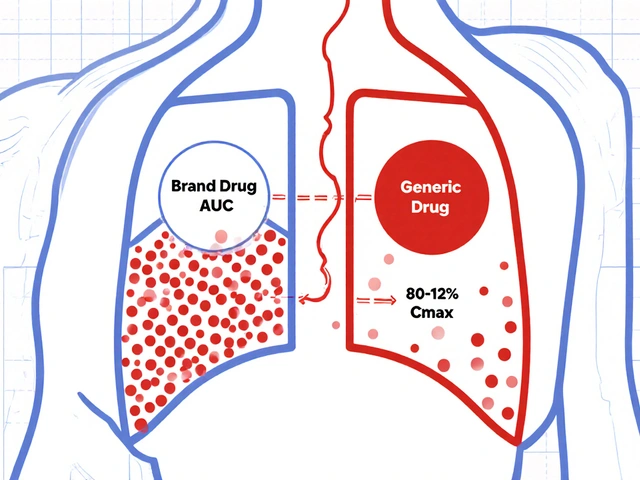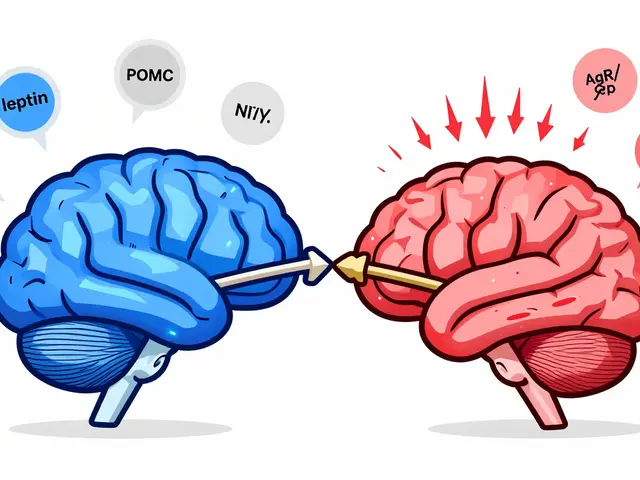Hepatitis C Treatment Side Effect & Cost Comparator
Compare Treatment Options
Select a treatment to compare its side effects and approximate monthly cost:
Copegus is a brand-name oral formulation of ribavirin, an antiviral approved for chronic hepatitis C infections. It works by mimicking nucleotides, confusing the virus’s replication machinery and slowing its spread. Because ribavirin is a broad‑spectrum agent, it’s often paired with interferon or newer direct‑acting antivirals (DAAs). The drug’s half‑life is long (about 12hours) and it’s taken in divided doses for up to 48weeks, depending on genotype.
Why Compare Copegus with Newer Options?
Since the early 2000s, hepatitis C treatment has shifted from interferon‑based regimens (often with ribavirin) to all‑oral DAA combinations that cure >95% of patients in 8-12weeks. Patients still see Copegus prescribed when cost constraints, specific genotypes, or transplant protocols demand it. Understanding the trade‑offs helps clinicians and patients pick a plan that fits medical needs, lifestyle, and budget.
Key Players in the Current Landscape
Below are the most frequently used alternatives to ribavirin‑based therapy. Each entry includes its core attributes.
- Sofosbuvir is a nucleotide analogue that blocks the HCV NS5B polymerase.
- Ledipasvir is a NS5A inhibitor often combined with sofosbuvir (Harvoni).
- Interferon‑alpha is a immune‑modulating protein that boosts the host’s antiviral response.
- Daclatasvir is a potent NS5A inhibitor used with sofosbuvir or other DAAs.
- Elbasvir/Grazoprevir (commercially Zepatier) is a fixed‑dose combo targeting NS5A and NS3/4A protease.
- Glecaprevir/Pibrentasvir (commercially Mavyret) is a pangenotypic protease‑inhibitor duo taken for 8weeks.
- Hepatitis C Virus (HCV) is a RNA virus with at least seven genotypes that dictate treatment choice.
Side‑Effect Profiles: What to Expect
Copegus’s most notorious side effect is hemolytic anemia, affecting up to 20% of patients. It also causes fatigue, insomnia, and birth‑defect risks if taken during pregnancy. In contrast, DAAs like sofosbuvir‑based combos rarely cause blood‑related issues; headaches and mild fatigue are more common. Interferon‑alpha can trigger flu‑like symptoms, depression, and thyroid problems, making it the least tolerable option for many.
Cost Considerations
Ribavirin is inexpensive (<$500per course) but often requires prolonged therapy and monitoring. Modern DAAs carry higher list prices ($30,000-$95,000 for a full course) yet achieve cure rates in half the time, reducing overall healthcare utilization. Insurance coverage varies: many payers now approve DAAs as first‑line, while ribavirin may be limited to specific indications or resource‑poor settings.

Regimen Length and Cure Rates
Copegus‑based regimens typically span 24-48weeks, with sustained virologic response (SVR) rates of 50-70% for genotype 1 and up to 80% for genotype 2/3. All‑oral DAA combos finish in 8-12weeks and consistently push SVR above 95% across genotypes. Shorter therapy translates to fewer clinic visits and less time off work.
| Agent | Mechanism | Typical Regimen | Major Side Effects | FDA Approval Year | Approx. US Cost |
|---|---|---|---|---|---|
| Copegus (Ribavirin) | Guanylate analogue - error catastrophe | 12-48weeks, often with interferon or DAA | Hemolytic anemia, insomnia, teratogenicity | 2002 | $400-$600 |
| Sofosbuvir+Ledipasvir (Harvoni) | NS5B polymerase + NS5A inhibition | 8weeks (genotype 1/4) or 12weeks (others) | Headache, fatigue | 2014 | $84,000 |
| Elbasvir/Grazoprevir (Zepatier) | NS5A + NS3/4A protease inhibition | 12weeks (all genotypes) | Fatigue, nausea | 2016 | $57,000 |
| Glecaprevir/Pibrentasvir (Mavyret) | NS3/4A protease + NS5A inhibition | 8weeks (pangenotypic) | Diarrhea, headache | 2017 | $54,000 |
Decision‑Making Framework
When weighing Copegus against newer agents, consider four pillars:
- Genotype & baseline viral load - some DAAs are genotype‑specific; ribavirin retains broader activity.
- Renal and hepatic function - ribavirin is safe in mild renal impairment, while many DAAs require dose adjustments.
- Pregnancy potential - ribavirin is contraindicated; DAAs have limited data but are generally avoided in pregnancy.
- Insurance and out‑of‑pocket expense - a low‑cost ribavirin course may be the only option for uninsured patients.
Plot these factors on a simple matrix to see which regimen lands in the “high benefit, low barrier” quadrant.
Safety Monitoring
Copegus requires baseline CBC and monthly hemoglobin checks. If hemoglobin drops below 10g/dL, dose reduction or discontinuation is advised. DAAs need liver function tests at start and end of therapy; many clinicians also check for drug‑drug interactions, especially with protease inhibitors.
Related Concepts and Next‑Level Topics
Understanding the broader treatment ecosystem helps contextualize the comparison:
- HCV genotype distribution worldwide (genotype 1 dominates in the US, genotype 4 in the Middle East).
- Guidelines from the American Association for the Study of Liver Diseases (AASLD) that prioritize pan‑genotypic DAAs.
- Role of resistance‑associated substitutions (RAS) when choosing a DAA.
- Post‑treatment monitoring for hepatocellular carcinoma in cirrhotic patients.
Readers interested in the policy side can explore how the FDA regulatory agency that approves antiviral drugs in the US influences pricing negotiations and compassionate‑use programs.
Bottom Line
If you can access an all‑oral DAA combo, it will likely give you a faster cure with fewer side effects. Copegus remains a viable bargain for certain genotypes, transplant patients, or those with limited insurance coverage, but it demands vigilant lab monitoring and carries a notable anemia risk. Always discuss individual health status, medication history, and financial factors with a hepatology specialist before committing to a regimen.

Frequently Asked Questions
Can Copegus cure hepatitis C on its own?
Ribavirin alone rarely achieves sustained virologic response. It’s usually paired with interferon or a direct‑acting antiviral to reach cure rates above 50%.
Why do some doctors still prescribe ribavirin?
Cost is a major driver. In resource‑limited settings or for patients without insurance, ribavirin’s low price makes it the only affordable option, especially when combined with a short‑course DAA.
Is ribavirin safe for people with kidney disease?
Ribavirin is primarily excreted by the kidneys, so dose adjustments are needed for severe renal impairment (eGFR<30mL/min). In mild to moderate disease, it can be used with close monitoring.
What are the pregnancy risks of ribavirin?
Ribavirin is a known teratogen. Women must use two reliable forms of contraception during treatment and for six months after stopping the drug.
How do I know which DAA regimen is best for my genotype?
Guidelines recommend pan‑genotypic options like glecaprevir/pibrentasvir for most patients. Genotype‑specific combos (e.g., sofosbuvir/ledipasvir) are still effective for genotype 1 and 4 but require genotype testing first.
Do DAAs interact with common medications?
Protease‑inhibitor-based DAAs (glecaprevir, grazoprevir) can affect drugs metabolized by CYP3A4, such as certain statins and anti‑seizure meds. Always review a full medication list with your prescriber.
What follow‑up tests are needed after finishing therapy?
A hepatitis C RNA PCR test 12 weeks after treatment confirms cure (SVR12). If you have cirrhosis, continue semi‑annual imaging for liver cancer surveillance.







KISHORE KANKIPATI
September 25, 2025 AT 18:37Copegus still finds a niche where budget matters.
Jefferson Vine
October 3, 2025 AT 21:33If you look at the history of HCV therapy, it’s like watching a sci‑fi saga unfold-ribavirin was the gritty anti‑hero, and the DAAs are the sleek space‑rangers that swooped in with a cure rate that feels like cheating. The side‑effects? Ribavirin’s anemia is the villain that stalks you, while the newer combos just whisper a headache before they vanish. And the price tag? Let’s just say the old‑school pills won’t break the bank, but they’ll break your red blood cells.
Ben Wyatt
October 12, 2025 AT 00:29For clinicians weighing options, the key is genotype, liver status, and patient tolerance. Ribavirin can still be paired with interferon for certain genotypes, but most modern regimens achieve >95% SVR without it. If cost is a barrier, some programs negotiate reduced DAA pricing, yet the anemia risk with ribavirin often demands monitoring and potential dose reductions.
Donna Oberg
October 20, 2025 AT 03:33Oh, the drama of choosing a pill!
Will you endure the crimson tide of hemolysis, or whisper sweet nothings to a headache‑only regimen??
Every dosage feels like a cliff‑hanger, every lab result a plot twist!!!
Garreth Collard
October 28, 2025 AT 05:33Darling, the theatrical flair of ribavirin’s side‑effects can’t outshine the quiet efficiency of a pan‑genotypic DAA. While you revel in melodrama, patients simply want a cure without the blood‑draining opera.
Daniel LaMontagne
November 5, 2025 AT 08:33Honestly, if you’re not dealing with a strict budget, just go straight to the DAAs 😊. They’re easier on the body and you’ll spend less time worrying about labs.
Gary Levy
November 13, 2025 AT 11:33From a pragmatic standpoint, the cost differential is massive-ribavirin at $100‑200 a month versus $1,000‑$2,000 for modern combos. That said, insurance formularies sometimes force older drugs into the mix, so you end up juggling efficacy, side‑effects, and paperwork all at once.
sourabh kumar
November 21, 2025 AT 14:33Listen bro ribavirin cheap but your blood will bleed stop wasting time
Christian Miller
November 29, 2025 AT 17:33One must consider that the pharmaceutical lobby possibly suppresses long‑term data on ribavirin’s mutagenic potential. Independent studies, though scarce, hint at subtle genomic instability that mainstream guidelines may downplay.
NORMAND TRUDEL-HACHÉ
December 7, 2025 AT 20:33In the grand tapestry of antiviral therapy, ribavirin is but a footnote, a relic of an era soon consigned to museum displays. The elegance of DAAs lies in their molecular precision-no surprises, just predictable virologic triumph.
AJIT SHARMA
December 15, 2025 AT 23:33Ribavirin has been a cornerstone of hepatitis C treatment since the late 1990s, offering a modest antiviral punch when combined with interferon.
Its mechanism of action-mimicking nucleotides and inducing lethal mutagenesis in the viral genome-was groundbreaking at the time.
However, the drug is notorious for causing hemolytic anemia, which affects roughly one in five patients and often requires dose adjustments.
In addition to anemia, patients report fatigue, insomnia, and a strict contraindication in pregnancy due to teratogenic risk.
Monitoring protocols demand regular complete blood counts, adding a layer of clinical burden that many practices find cumbersome.
Cost-wise, ribavirin is undeniably cheap, with generic formulations priced around $100‑$200 per month in most markets.
This affordability makes it an attractive option in low‑resource settings where newer DAAs are financially out of reach.
Yet, the overall cost of therapy may rise when you factor in the ancillary expenses of managing side‑effects, such as erythropoietin or blood transfusions.
Modern direct‑acting antivirals like sofosbuvir and ledipasvir achieve cure rates above 95% in an 8‑12‑week course, dramatically shortening treatment duration.
Their side‑effect profiles are comparatively mild, with headaches and mild fatigue being the most common complaints.
Insurance companies in many countries have begun to favor DAAs, offering patient assistance programs that slash the out‑of‑pocket price.
Some guidelines still list ribavirin as a fallback for specific genotypes or in cases of transplant‑related HCV recurrence.
Clinicians must weigh the ethical implications of prescribing a drug that can cause substantial hematologic toxicity versus a sleek, more expensive alternative.
In my experience, patients who receive ribavirin often voice frustration over the constant lab visits and the feeling of being 'pushed around' by side‑effects.
Ultimately, the decision should be individualized, balancing budget constraints, genotype nuances, and the patient’s tolerance for potential anemia.
Neber Laura
December 24, 2025 AT 02:33The data cherry‑picked by DAA advocates blatantly ignores ribavirin’s real‑world toxicity. Wake up and read the full safety reports.